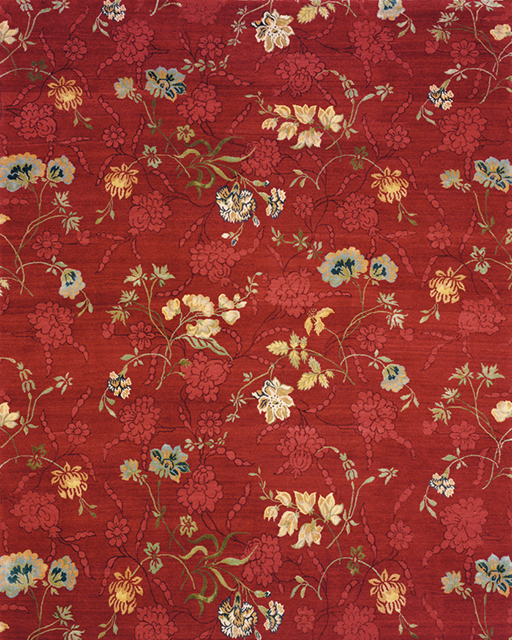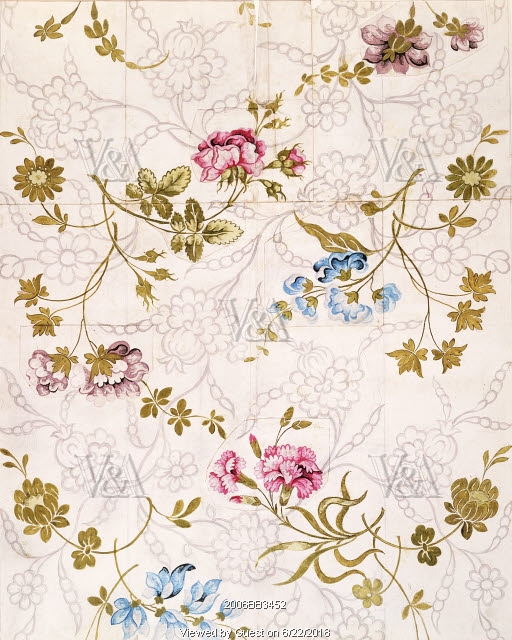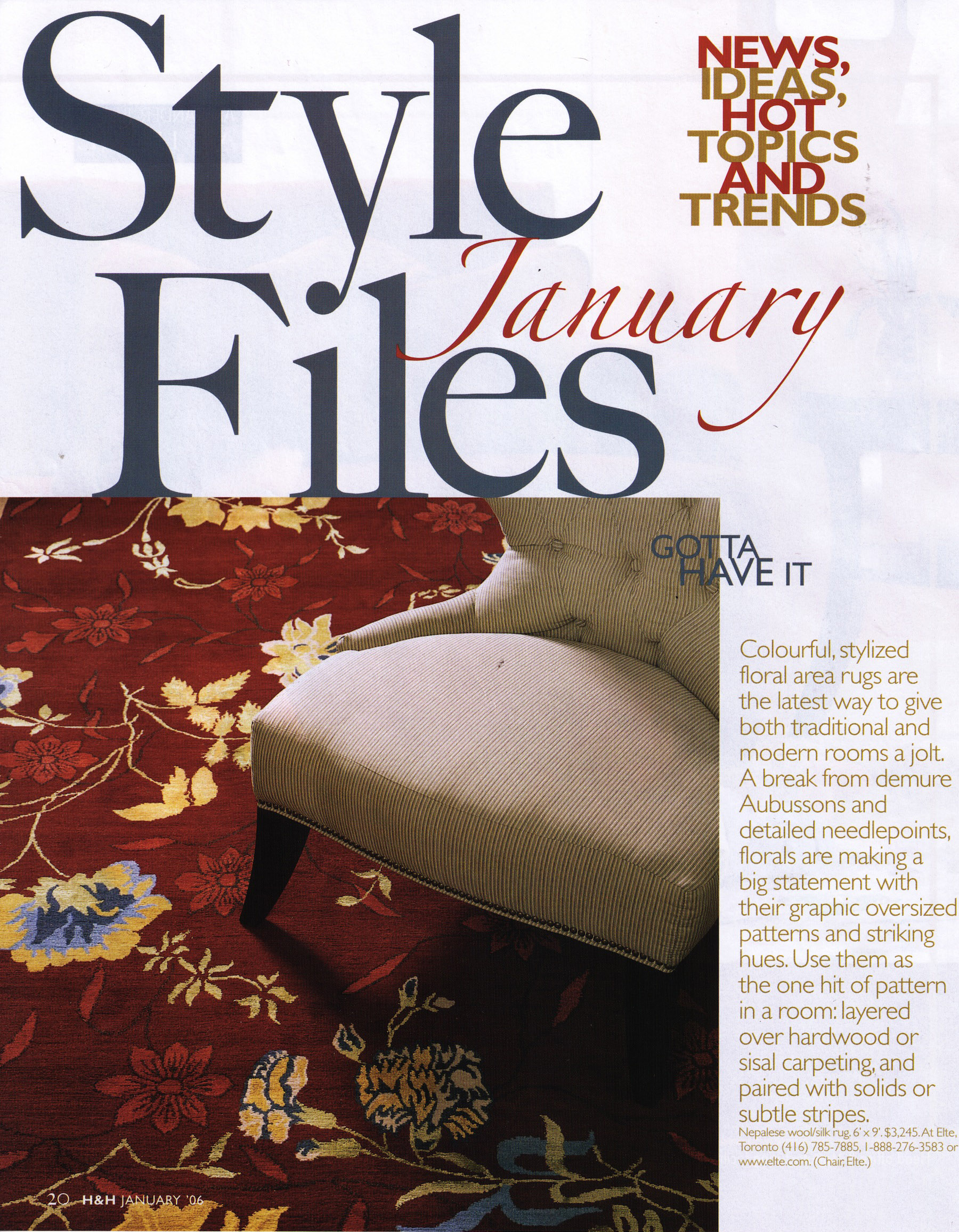This article originally appeared on The Ruggist on 14 January 2013 C.E. under the same title. On 23 June 2018 C.E. it was re-edited and updated to correct minor name and content changes as well as to provide better quality images.
As we begin today with the second instalment of my examination of the issue of Copyright within the rug and carpet industry, I’d like to take the opportunity to thank you for your readership over the years. “The Ruggist” started as a hobby and time killer one lazy summer and since then has grown to become something much more than I had ever really imagined. Whether you agree with what I say or otherwise, I truly appreciate the opportunities your ramblings, complaints, and/or support have brought before me over the years. Thank you! I wish you a prosperous 2013. Good luck and Godspeed in your endeavours. Now, with the pleasantries aside, I give you more on Copyright.
First a little background on Copyright courtesy of another American expat: C.G.P. Grey and then an uninspired opening in the form of once again revisiting my now beloved quote from James Ffrench.
Ever since Man was in caves and the first man or women struck flint together to make fire (and long before modern legalities were imposed upon civilization), ideas have originated with someone. Those ideas, those designs were those of the first who created fire, but as James Ffrench of Beauvais Carpets says: “If we didn’t copy from each other, there would only be one person cooking with fire.” And he’s right, if we had not copied, had not created derivative work, had not built upon the work of Mr. Predecessor Firestarter, we’d all be eating Chicken Tartar a la Marge Simpson. But no, we did do all of those things, and we in turn, created endless beauty that has propelled us to where we are now, more or less. To belabour just a little (and skipping steps at whim): Open fire beget fireplaces which beget wood/gas/coal stoves which beget electric stove which beget microwave ovens which beget, which beget, which beget.
If our long dead Mr. Firestarter had staked out Copyright using misguided modern criteria (a la The Walt Disney Company – I encourage you to further research their unreasonable demands to extend Copyright) none of these inventions would have occurred at the worst, and at the best we’d have a very wealthy clan of Europeans living off licensing, but I digress. To be frank it never occurred to him (or her) that he should Copyright his idea, no, he was more worried about his fellow Man not getting salmonella from the Chicken Tartar. And this ladies and gentleman, boys and girls, future Chinese overlords reading “The Ruggist” in wonder that rugs were once made in China, is the crux of this issue: The process of copying and deriving work (the modern stove from fire) which has allowed man to will into being immeasurable beauty is diametrically opposed the the notion that any one man (or Corporation if you are an extremely naive United States Supreme Court – please note hyperbole), can own and restrict the use of Copyright.
It is clear to any rational person (that’s right – read between the lines on that one) that neither the near perpetual Copyright sought after by The Walt Disney Corporation on one extreme, nor the freewheeling unfettered unrestricted use of any work on the other, is an acceptable solution. It is also reasonable to assume, and argue, that if I create something I get to make money (or not) from it. But when does my right to do as I please with my created work end and how is that balanced with the inherent needs of civilization to progress? Guess what? Long before the modern era of greed, some people who are viewed as rather smart, came up with a solution. To rehash what Mr. Grey had to say: Article I, Section 8, Clause 8 of the United States Constitution, also known as the Copyright Clause, empowers the United States Congress: “To promote the Progress of Science and useful Arts, by securing for limited Times to Authors and Inventors the exclusive Right to their respective Writings and Discoveries.”
Now I am no lawyer, nor do I personally believe that laws should require lawyers to be interpreted, but it would appear on face value the Constitution is rather clear. Congress has been empowered (and perhaps it is now apparent how it has all gone to hell as is said) to promote the progress of the arts by allowing creators of work exclusive rights for a limited time. So how is that supposed to work? I create something (a rug design) and to reward me for my work I alone get the rights to use that design for a predefined period of time. Then guess what? The design is no longer mine alone. Sure I will always be the man who created it, but everyone is free to base their new work upon mine (or use it directly) in an effort to spur innovation, creativity, and yes, progress! Those now newly (even if derivative) designs are protected and the creators thereof now get to make money (or not) from their work, and the cycle continues ad infinitum taking open fire to microwave ovens. And as I have worked on this article it has become apparent that I need to appreciate the fact that Copyright must, at some point, come to an end in order for the next step to be taken. So how does this work for the rug industry? How about some pictures instead of a giant wall of text!
[wc_row]
[wc_column size=”one-half” position=”first”]

[/wc_column]
[wc_column size=”one-half” position=”last”]

[/wc_column]
[/wc_row]
As I’ve made blatantly clear in this series I view all design as evolutionary; we are not creating in a void no matter what you, your artistic arrogance, or your savvy marketing department may believe. Yes, there are those in the industry who are truly at the vanguard of design but inspiration came from somewhere…Take for example the exceptionally beautiful Lapchi carpet shown above by the name of “Jardin”. (Note: Lapchi does not endorse my expose of this carpet/design/knockoff). I remember the very first time I saw “Jardin” and I marvelled at the attention to detail that was (now formerly) used in its construction; how the overcasting changed colour where each and every design detail intersected with the edge. Sigh. If only more companies still did this sort of thing… But I digress. ‘Jardan’, circa 2004 C.E. is based on an English mid-eighteenth (18th) silk fabric designed by Anna Maria Garthewaite; an exemplary example of the botanical designs which where quite prevalent in Europe at the at time. The fabric upon which it is based is shown above, image courtesy of the Victoria and Albert Museum.
So there you have it: The long dead Ms. Garthwaite created a beautiful fabric (the design of which is now in the public domain), the creative mind(s) at Lapchi came along saw her work, said ‘Wow! That would make a great carpet!’, tinker tinker with the design and colour a little (you can readily see both the similarities and the differences), and viola: A stunning carpet. Now you might be thinking I am going to call this lazy design as I said I would in my last article but I am not, for I do not think this is lazy at all. Inspiration + New Creative Input = New Copyrighted Work. This is how Copyright and design is supposed to work, and Lapchi, for the most part, did it right, and deserves to profit from their efforts (for a limited time… but that is another point).
On the other hand, would you like to see lazy (and greedy) design? I present…

Apparently the fine people over at Elte (a large banal Canadian Home Store located in Toronto, Ontario) didn’t get the memo on Copyright, or they did, and like many in the rug industry they chose to ignore it because of the ‘quick’ money to be made. In ELTE’s defence though, their design is different from the inspiration original, just as Lapchi’s is different, so one could argue (perhaps successfully) that the ELTE design is not infringing on the Lapchi design. In fact, I would go so far as to say that is a plausibly valid argument, but who the hell are they kidding? Now of course it is entirely possible that ELTE (or the knock-off producing manufacturer they purchased from), like the creative folks at Lapchi, also saw the Anna Maria Garthwaite fabric, and also interpreted it into a rug design, and also happened to select a striking crimson red colouration. It is also possible that I like the ladies, but I don’t, and they didn’t. Here is what I think happened.
Someone at ELTE et al saw the Lapchi design at rug show, or in print, or at a rug showroom. They might have even gotten the backstory on the design inspiration because as I recall, Lapchi was really keen on promoting the historical inspiration of its, at the time, innovative approach. They (ELTE) thought ‘Wow this sexy red colouration will be great.’ and then proceeded either to make or purchase said design. Whether they specifically had the piece made, or purchased it already made is neither here nor there for our discussion, as in late 2005 there is absolutely no way in hell they did not know of Lapchi and their designs. There was simply too much buzz around Lapchi at the time, and thus follows the desirability to knock them off. Why was the ELTE rug featured as a ‘hot trend’ in Canadian House and Home? It was surely not because of the hard design work of the people at ELTE; the cache was someone else’s and it was being misappropriated. As for the magazine… …let’s just say they are trying to sell their magazine.
Whether the ELTE design infringes on Lapchi’s Copyright is not for us to decide today, though if you press me on the matter I would say it does not. That notwithstanding, the ELTE rug remains an egregious example of lazy and greedy design. Furthermore is an exemplary example of a knockoff because it is clear (or it should be) the rug is an attempting to deceive unsuspecting consumers into purchasing what they believe to be an authentic Lapchi carpet (though perhaps not by name). So where are we now? I encourage everyone reading this to do some research and form your own opinions. I also strongly encourage you to ask your lawyers their opinions. I further suggest that you take what both I and your lawyer say with a grain of salt. The law is ever evolving and it is our own personal responsibility to shape it to our needs, not to be conformed by the law. But enough of my civil disobedience allusions, and on to the point (thus far).
Copyright exists [Period!]. It also ends [Period!]. And both are necessary to drive the creative process forward. Moreover and outside of the legalities of actually infringing upon the work of others, we as an industry need to be aware of that fact that creating knockoffs (either in the Creative Matters example from the last article or in the Lapchi example of this article) harms the industry and makes everyone look bad. By allowing knockoffs to continue, we remain complicit in their creation. But what is the balance? How can we be inspired and create, while being original? Join us next time as we examine what happens when the line in crossed between inspiration and theft!



